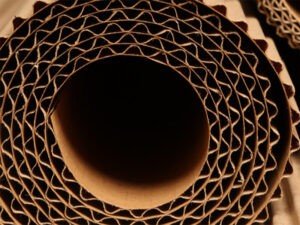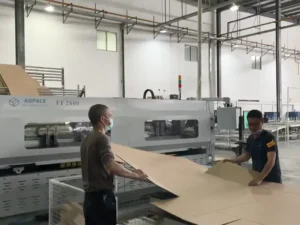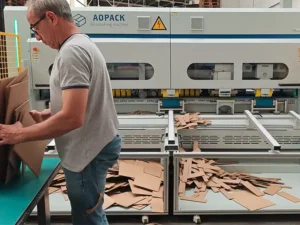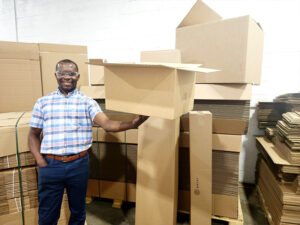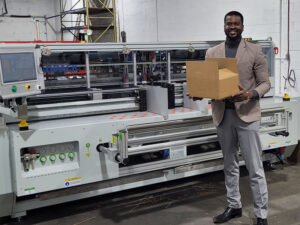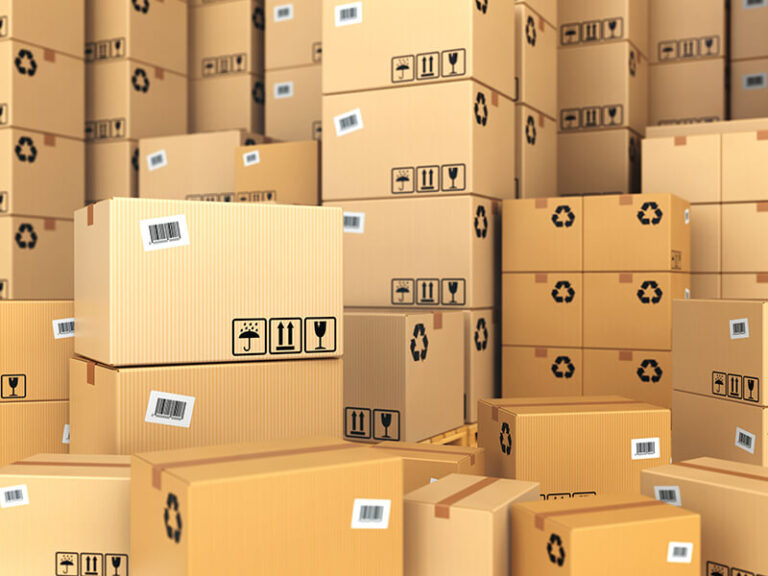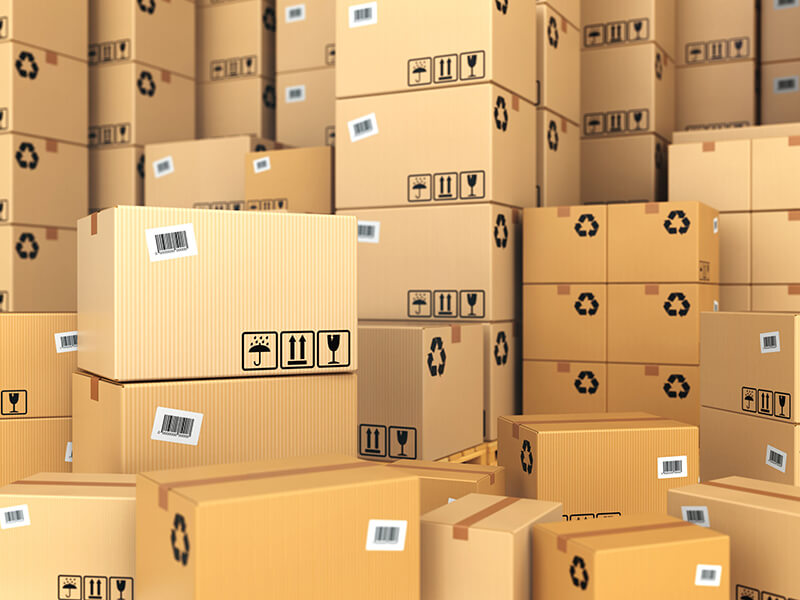1. Introduction to Cardboard
Cardboard to make box is a ubiquitous material in the packaging industry, known for its versatility, strength, and cost-effectiveness. It is primarily used to create boxes for shipping, storage, and retail packaging. The term “cardboard” is often used interchangeably with paperboard and corrugated fiberboard, though these materials have distinct characteristics and applications. Understanding the types of cardboard used in box manufacturing is crucial for selecting the right material for specific packaging needs.
1)Definition and General Use
Cardboard refers to a range of heavy-duty paper-based materials that are thicker and more durable than regular paper. It is commonly used to make boxes due to its ability to withstand pressure and protect contents during transportation. Cardboard boxes are industrially prefabricated and are available globally, serving as essential components in logistics and retail.
2)Importance in Packaging
The importance of cardboard in packaging cannot be overstated. It provides a lightweight yet sturdy solution for protecting goods, reducing shipping costs, and minimizing environmental impact through recyclability. Cardboard’s adaptability allows it to be used in various forms, from simple folding cartons to complex shipping containers, making it indispensable in the packaging industry.
2. Types of Cardboard
1) Paperboard
Paperboard, sometimes referred to as cardboard, is a thick paper-based material typically over 0.25 mm in thickness. It is used for making folding cartons, set-up boxes, and other packaging solutions. Paperboard is often employed for consumer goods packaging, such as cereals, cosmetics, and pharmaceuticals, due to its smooth surface, which is ideal for printing and branding.
2) Corrugated Cardboard
Corrugated cardboard, also known as corrugated fiberboard, is a more robust material consisting of a fluted corrugated sheet sandwiched between two flat liner boards. This structure provides excellent strength and durability, making it the preferred choice for shipping and storage boxes. Corrugated cardboard is widely used for transporting goods due to its ability to absorb shocks and protect contents from damage.
3. Corrugated Cardboard
1) Structure and Composition
Corrugated cardboard is composed of three layers: two outer flat liners and a middle fluted layer. The fluted layer, or corrugation, is what gives the material its strength and rigidity. The combination of these layers creates a lightweight yet sturdy material capable of withstanding significant pressure and impact.
2) Types of Flutes and Their Uses
Corrugated cardboard comes in various flute sizes, each offering different levels of strength and cushioning. Common flute types include:
- A Flute: Offers excellent cushioning and is used for fragile items.
- B Flute: Provides good puncture resistance and is often used for retail packaging.
- C Flute: A versatile option used for shipping boxes and packaging.
- E Flute: Thin and lightweight, ideal for small boxes and retail packaging.
- F Flute: Used for micro-flute packaging, offering a smooth surface for high-quality printing.
The choice of flute type depends on the specific requirements of the packaging, such as the weight and fragility of the contents.
4. Paperboard
1) Characteristics and Applications
Paperboard is characterized by its smooth surface and rigidity, making it suitable for high-quality printing and branding. It is commonly used for packaging consumer goods, where visual appeal is important. Paperboard is also used for set-up boxes, which are rigid and do not fold flat, providing a premium packaging solution for high-end products like jewelry and electronics.
2) Comparison with Corrugated Cardboard
While paperboard is ideal for retail packaging due to its printability and aesthetic appeal, corrugated cardboard is preferred for shipping and storage due to its superior strength and durability. The choice between the two depends on the intended use, with paperboard being more suitable for lightweight and visually appealing packaging, and corrugated cardboard being better for heavy-duty applications.
5. Manufacturing Process
1) Materials Used
The primary materials used in cardboard manufacturing are paper pulp derived from wood, recycled paper, and adhesives. Kraft paper, made from virgin softwood fibers, is commonly used for its strength and printability. Recycled paper, known as test liners, is also used, particularly for inner layers where visual appeal is less critical.
2) Steps in Production
The production of cardboard involves several steps:
- Pulping: Wood chips or recycled paper are processed into pulp.
- Forming: The pulp is formed into sheets and dried.
- Corrugating: For corrugated cardboard, the fluted layer is created and sandwiched between liner boards.
- Cutting and Creasing: The cardboard is cut and creased into the desired shapes and sizes.
- Printing and Finishing: The surface is printed with branding and other information, and any additional finishes are applied.
- Environmental Impact
3) Recycling and Sustainability
Cardboard is highly recyclable, making it an environmentally friendly packaging option. Recycling cardboard reduces the need for virgin materials, conserves energy, and minimizes waste. Many manufacturers are also exploring sustainable practices, such as using biodegradable adhesives and inks.
4) Innovations in Eco-Friendly Packaging
Innovations in cardboard packaging focus on enhancing sustainability. These include developing water-resistant coatings, using plant-based inks, and creating designs that minimize material usage while maximizing strength. Such innovations aim to reduce the environmental footprint of packaging and promote a circular economy.
7. Conclusion
1) Summary of Key Points
Cardboard is a versatile and essential material in the packaging industry, available in various forms such as paperboard and corrugated cardboard. Each type has distinct characteristics and applications, with corrugated cardboard being ideal for shipping and storage, and paperboard being suitable for retail packaging. The manufacturing process involves sustainable practices, and the material’s recyclability contributes to its environmental benefits.
2) Future Trends in Cardboard Packaging
The future of cardboard packaging lies in continued innovation and sustainability. As consumer demand for eco-friendly products grows, manufacturers will likely focus on developing more sustainable materials and processes. Advances in digital printing and design will also enhance the functionality and appeal of cardboard packaging, ensuring its continued relevance in the packaging industry.
How useful was this post?
Click on a star to rate it!
Average rating 0 / 5. Vote count: 0
No votes so far! Be the first to rate this post.
